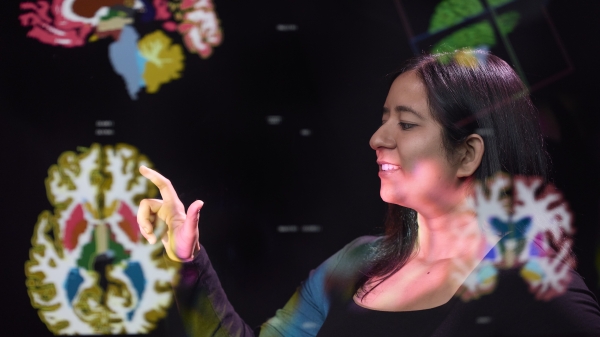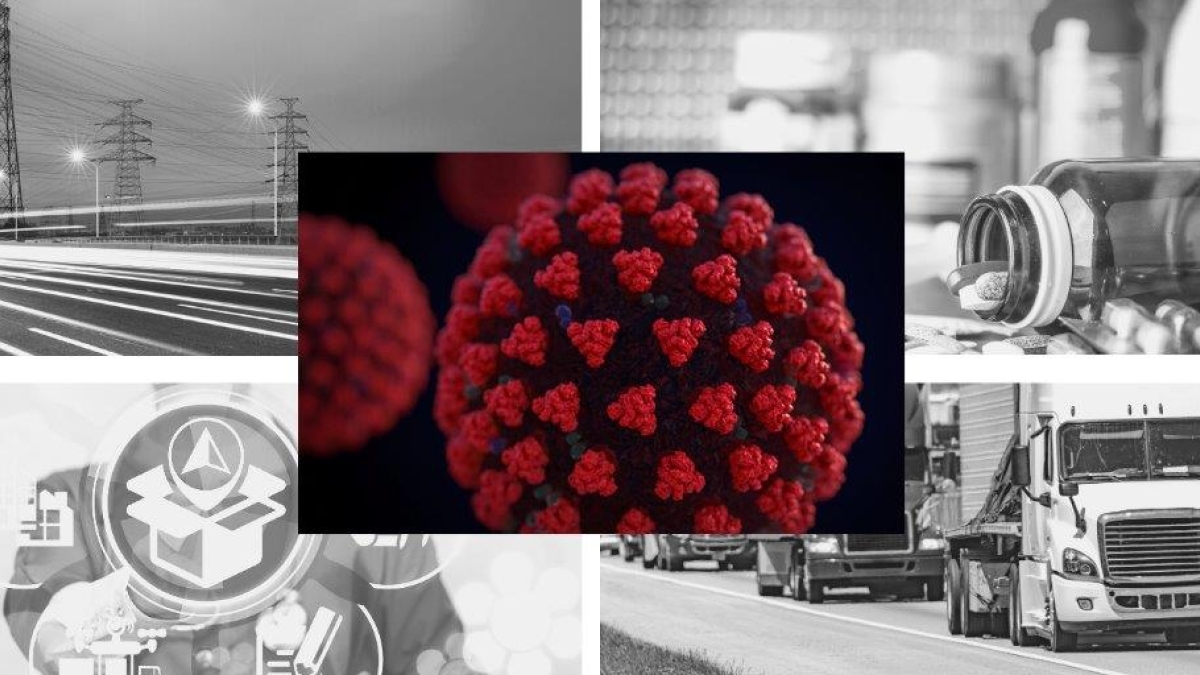When the spread of COVID-19 shifted from a looming threat to a full-blown pandemic in March, the Center for Accelerating Operational Efficiency (CAOE) at Arizona State University sprang into action. Working directly with the U.S. Department of Homeland Security (DHS), the center helps some of the agencies charged with responding to the pandemic plan for and overcome both anticipated — and unanticipated — challenges.
"The center has always focused on projects that directly contribute to the operational mission of the Department of Homeland Security,” said Ross Maciejewski, the director of the center. “When DHS’s tactical priorities shift and they are faced with responding to a crisis, we adjust as well.”
For example, the center shifted the focus of an ongoing project to address expected supply chain challenges around medical equipment and vaccines. It also added two new projects to help the government and others forecast the economic consequences of the pandemic, and related policy responses, based on different scenarios.
The Center for Accelerating Operational Efficiency is a DHS Center of Excellence, and its mission of providing data-enabled analysis and decision-making practices allows it to work with numerous agencies within the DHS enterprise on different subjects, ranging from disaster preparedness to security checkpoints at the airport.
“Part of our center’s mission is to help DHS component agencies be nimble and responsive to changing situations by providing real-time information and analysis and better predictive models,” said Nadya Bliss, executive director of ASU’s Global Security Initiative, which serves as the home of the CAOE.
Supply chain research shifts focus
Shortly after the pandemic hit the U.S., the CAOE team started thinking about how its research could help address complications stemming from this new threat. One clear challenge is the health care supply chain, and specifically how to make sure distribution of limited resources — from ventilators to an eventual vaccine — can be optimized so the people most in need receive them first.
Three researchers on the team shifted the focus of an ongoing project on natural disaster preparedness to tackle the issue. The researchers were developing decision support systems for DHS and other emergency responders utilizing a combination of available data, forecasts and expert opinion. The goal is to help decision-makers adjust vital transportation and diesel fuel supply chains on the fly, giving them more tools to overcome unforeseen obstacles.
“We quickly realized that the team's solutions for hurricane preparedness could be applied to supply chain challenges around COVID-19 and immediately started adjusting our research plan to include this research area. We will initially address the issues of optimizing the timing of opening levels of cities based on COVID-19 statuses and on supply chain design for vaccine delivery,” said lead researcher Pitu Mirchandani.
The project now includes these focus areas:
- Equalizing statewide access for vaccines by creating an optimization model that accounts for variations such as risk groups, previous vaccine allocations and more.
- Deploying and redeploying ventilators by using forecasts for ventilator demand to recommend supply chain decisions for dynamic allocation.
- Understanding how the disease is likely transmitted by using a simulation model to study disease dynamics.
- Examining social distancing policies by using simulations to guide policies on timing, duration and degree of the effectiveness of various methods.
- Creating logistics for distribution of antivirals by exploring existing pharmacy networks to distribute antivirals with zip code resolutions for each state.
New projects address economic issues
The pandemic is causing even more than a health care crisis. The U.S. recently entered a recession, and the scale and duration of economic impact is unknown. Two CAOE research teams are working to address the future economic challenges.
The first project, led by Professor Adam Rose with the University of Southern California, will estimate the economic impacts of the SARS-CoV-19 coronavirus for six scenarios, ranging from a relatively minor event to a disaster. The project will focus on the impact to the U.S. economy, but other regions also will be studied to better understand the effects on major U.S. trading partners where COVID-19 is spreading rapidly.
“After you lift these mandatory closures and the stay-at-home order, some behavioral factors start to come in — people are still going to be fearful, many will not go out and some will possibly refrain from sending kids back to school. The impacts of the virus are going to have a long-term effect,” Rose said. “The current project is already gaining interest with health care, economic and other public policymakers.”
The second project will use a quarterly equilibrium model of the U.S. economy to determine the pandemic’s effects and the impacts of associated policy responses. Ultimately, this research will provide health care, economic and public policymakers with models that can measure impacts to GDP, investment, consumption, employment, output and employment by industry, as well as gross regional product and employment by region.
The CAOE’s ability to rapidly adjust and support DHS priorities is central to its mission. The scale of the pandemic and the speed with which the crisis took hold posed new challenges, but the CAOE has responded.
“In these unprecedented times of uncertainty, our work as a center has not changed. We have refocused our work on the current challenges we face. This is apparent in the projects the center was able to pivot to address COVID-19 effectively,” Maciejewski said.
Written by Oliver Dean and Dawn Janssen
More Science and technology

How ASU is reshaping manufacturing training
The manufacturing sector faces a persistent challenge: a shortage of skilled workers.As industries adopt emerging technologies, traditional training methods struggle to meet the demand for skilled…

Podcast explores the future in a rapidly evolving world
What will it mean to be human in the future? Who owns data and who owns us? Can machines think?These are some of the questions pondered on a newly launched podcast titled “Modem Futura.” Co-…

New NIH-funded program will train ASU students for the future of AI-powered medicine
The medical sector is increasingly exploring the use of artificial intelligence, or AI, to make health care more affordable and to improve patient outcomes, but new programs are needed to train…
